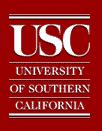
Towards Visually-Guided Neuromorphic Robots
| Home |
| Overview |
| News |
| Hardware |
| Software |
| Gallery |
| Downloads |
| Team |
| Publications |
| Sponsors |
| Links |

Beobot Project Overview
|
1. What is a Beobot? It is an autonomous robot that uses off-the-shelf PC hardware and software to perform its computation. It has:
|
2. What is its purpose? The Beobot is devised to test the robustness of our neuromorphic vision algorithms. It is designed to run in actual outdoor unconstrained environments, which is a far cry from the insulated test labs that robots are mainly tested in. Once the first prototype is successful, the hardware can be manufactured for joint use with other AI or Robotics institutions. The possibilities for collaborations are promising. |
3. What's so special about it?
|
4. What is the long-term vision behind the Beobot philosophy? Animals demonstrate unparalleled abilities to interact with their natural visual environment, a task which remains embarrassingly problematic to machines. Obviously, vision is computationally expensive, with a million distinct nerve fibers composing each optic nerve, and approximately half of the mammalian brain dedicated more or less closely to vision. Thus, for long, the poor real-time performance of machine vision systems could be attributed to limitations in computer processing power. With the recent availability of low-cost supercomputers, such as so-called Beowulf clusters of standard interconnected personal computers, however, this excuse is rapidly losing credibility. What could then be the reason for the dramatic discrepancy between animal and machine vision? Too often computer vision algorithms are designed with a specific goal and setting in mind, e.g., detecting traffic signs by matching geometric and colorimetric models of specific signs to image features. Consequently, dedicated tuning or algorithmic alterations are typically required to accommodate for novel environments, targets or tasks. For example, an algorithm to detect traffic signs from images acquired by a vehicle-mounted camera will typically not be trivially applicable to the detection of military vehicles in overhead imagery. Much progress has been made in the field of visual neuroscience, using techniques such as single neuron electrophysiology, psychophysics and functional neuroimaging. Together, these experimental advances have set the basis for a deeper understanding of biological vision. Computational modeling has also seen recent advances, and fairly accurate software models of specific parts or properties of the primate visual system are now available, which show great promise of unparalleled robustness, versatility and adaptability. A common shortcoming of computational neuroscience models, however, is that they are not readily applicable to real images. Neuromorphic engineering proposes to address this problem by establishing a bridge between computational neuroscience and machine vision. An example of neuromorphic algorithm developed in our laboratory is our model of bottom-up, saliency-based visual attention, which has demonstrated strong ability at quickly locating not only traffic signs in 512x384 video frames from a vehicle-mounted camera, but also -- without any modification or parameter tuning -- artificial targets in psychophysical visual search arrays, soda cans, emergency triangles, faces and people, military vehicles in 6144x4096 overhead imagery, and many other types of targets. The new Beobot robotics platform is a test-bed aimed at demonstrating how neuromorphic algorithms may yield a fresh perspective upon traditionally hard engineering problems, including computer vision, navigation, sensorimotor coordination, and decision making under time pressure. This contrasts with the motivation behind biorobots, which aim at physically and mechanically resembling animal systems. To exploit real-time video streams and effectively base control on computationally-demanding neuromorphic vision algorithms, our new robots combine a small Beowulf cluster to a low-cost but agile four-wheel-drive robotics platform, together forming a Beowulf-robot or Beobot. What will Beobots be capable of that existing robots cannot already achieve? Most robots have underemphasized the vision component that is our main focus, and rely instead on dedicated sensors including laser range finders and sonars. Much progress has been made in developing very impressive physically capable robots (e.g., Honda humanoid). In addition, very sophisticated and powerful algorithms are now available that make robots intelligent (e.g., teams of robots collaborating towards a common goal at the USC robotics lab). However, we believe that some improvement still is possible in making robots more visually capable, as current systems often rely on simplified, low-computation visual tricks which greatly limit their autonomy and restrict their applicability to perfectly well-defined, prototypical environments.
|
5. How does a Beobot work? The Beobot is basically a high-load R/C car carrying a small cluster of PC computers on top of it. The PCs are loaded with flash memory as replacement hard drives, and a standard Linux OS is installed on them. iLab's neuromorphic vision software, which includes subsystems for focal visual attention, object recognition, rapid computation of scene gist and layout, and for scene understanding, runs on the PC cluster. The PCs use serial ports to communicate with the R/C car engine, telling it how much to turn and how fast to go. Firewire interface is used to connect to cameras, constantly feeding video data that the navigation software can decipher and act on.
|
6. Can I get in on this? Sure, we always welcome suggestions and comments, and are looking for qualified students, programmers and hardware developers interested in the project. Post a message to the iLab Forum to get started!
|